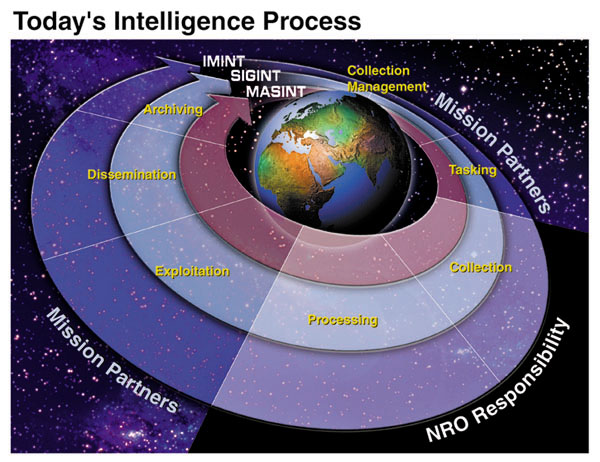- Reaction score
- 146
- Points
- 710
Space Force (actually Space Command, for now) and NRO:
Mark
Ottawa
Tectonic Shift As NRO Moved Under Space Command In Wartime [how does the US define that these days?]
US Space Command will officially stand-up on Aug. 29, with four main missions: "missile warning, satellite operations, space control and space support," says JCS Chair Gen. Joseph Dunford.

If war in space erupts, the new US Space Command will have the power to order the National Reconnaissance Office (NRO) to take “defensive space operations” under a new joint concept of operations. The new chain of command represents a tectonic plate shift in US national security space, which has long been plagued by often testy relationships between the Intelligence Community and DoD.
“For the first time, there will be a unified structure that fully integrates Intelligence Community and Department of Defense space defense plans, authorities and capabilities to ensure seamless execution of space defense systems,” Acting Director of National Intelligence Joseph Maguire told the National Space Council today.
“Furthermore, should conflict extend to space, the NRO will take direction from the Commander of US Space Command and execute defensive space operations based on a jointly developed playbook and informed by a series of exercises and war games,” he added.
Maguire admitted that establishing coordination and cooperation between the NRO — which builds and operates US spy satellites — and US military space operations (even in wartime) has been an almost impossible task. As Breaking D readers know, for two years the former NRO Director, Betty Sapp, resisted efforts by the two top civilians in the Defense Department to create what in 2017 became the National Space Defense Center (NSDC) under Strategic Command. And NSDC’s powers to integrate NRO and military space activities was limited.
Commanders in the field for decades have been clamoring (even as this is being written) for their own satellite systems that would be more responsive to their immediate tactical needs, rather than having to wait for NRO to re-prioritize its relatively few and usually exquisite satellites. The Army, in particular, has plans to develop its own remote sensing and other types of satellites in Low Earth Orbit (LEO) [emphasis added].
But the Air Force, which controls about 90 percent of the DoD’s space budget, also has clashed with NRO over perceived priority needs. “This is a big deal,” one Air Force insider said, noting that currently NRO, the Air Force and NASA meet three times a year to “untie these knots.”
“For years there have been debates about how NRO and military space organizations can be better integrated,” Maguire conceded. He explained that Space Policy Directive-4, issued in February, not only called for a new Space Force, but tasked the IC and DoD to develop an “enhanced mechanism” designed to “increase unity of effort and effectiveness” of space operations.
“Early in this task, we recognized that the proposed establishment of US Space Command provided us with the opportunity to finally determine the appropriate level of integrations between the Intelligence Community and DoD to ensure effective space operations,” he said.
The new organizational structure will maintain the NSDC at Strategic Command that was established in April 2017 to integrate NRO data into military space operations, but will expand its remit and deepen interagency ties.
Meanwhile, the NSDC will be shifted to US Space Command, once the command is formally stood up on Aug. 29 by Vice President Mike Pence [emphasis added], as announced today by Gen. Joseph Dunford, chairman of the Joint Chiefs of Staff. Dunford said that initially 87 units will be transferred to the new unified command under Gen. John Raymond. Raymond’s mission, he said, will focus on “missile warning, satellite operations, space control and space support.”..
https://breakingdefense.com/2019/08/tectonic-shift-as-nro-moved-under-space-command-in-wartime/
Mark
Ottawa

